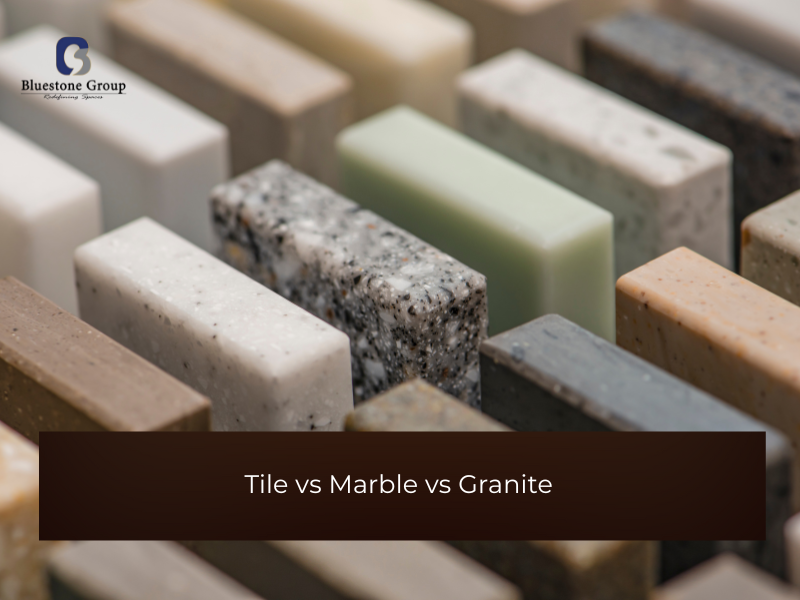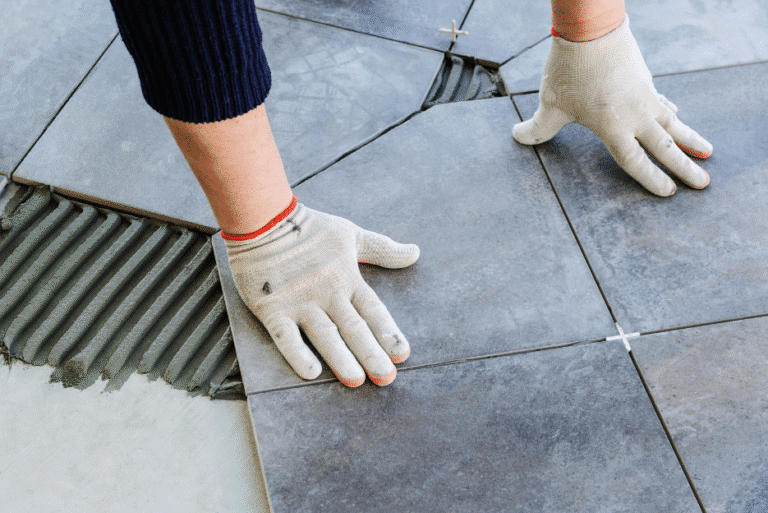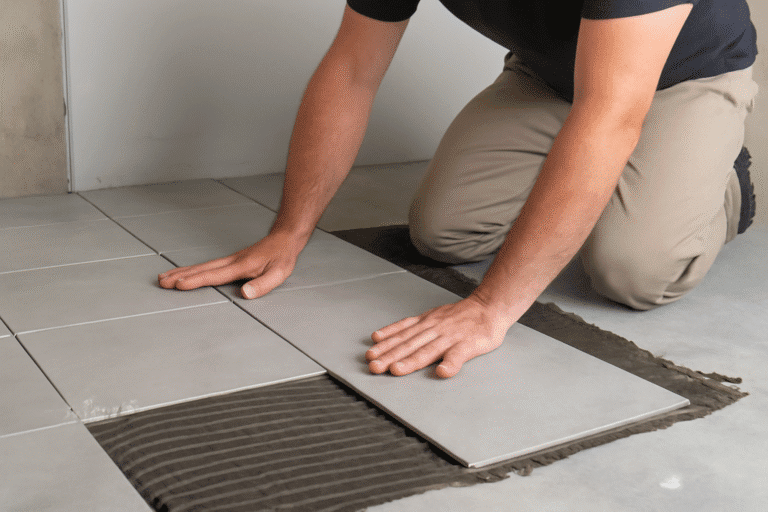
When it comes to selecting the right flooring for your home or commercial space, the choice can be overwhelming. Among the most popular options are tile, marble, and granite. Each has its unique advantages, visual appeal, maintenance needs, and cost factors. To make an informed decision, it’s important to compare these flooring materials across different parameters. In this post, we’ll explore the key differences between tile, marble, and granite to help you determine which option best suits your needs.
1. Aesthetic Appeal
Tile flooring offers a wide variety of designs, colors, and textures. Whether you’re looking for a modern, rustic, or traditional look, ceramic or porcelain tiles can replicate the appearance of natural stone, wood, or even concrete. Tiles are highly customizable and are a favorite for creative layouts and patterns.
Marble, on the other hand, is known for its luxurious and timeless appeal. The natural veining and rich tones of marble give any space a premium, elegant feel. It’s often associated with opulence and is a preferred choice in high-end homes and hotels.
Granite provides a more natural and earthy look compared to marble. It has a granular texture and comes in a wide range of colors. Granite’s bold, speckled appearance makes it ideal for adding a touch of uniqueness to any room.
2. Durability

Tiles are incredibly durable and resistant to scratches, stains, and moisture—especially porcelain tiles. They’re ideal for high-traffic areas like kitchens, bathrooms, and hallways. However, they can crack if heavy items fall on them.
Marble is softer compared to granite and tile. Though beautiful, it’s more susceptible to scratching, staining, and etching—especially when exposed to acidic substances. Marble flooring requires careful maintenance to preserve its appearance.
Granite is the most durable of the three. It’s highly resistant to scratches, heat, and stains, making it suitable for both indoor and outdoor flooring. Granite is a great long-term investment due to its rugged strength and longevity.
3. Maintenance
Tile floors are easy to maintain. Regular sweeping and occasional mopping are usually enough to keep them clean. Grout lines may require periodic cleaning to prevent discoloration.
Marble needs more attention. It should be cleaned with pH-neutral cleaners to avoid etching. Sealing the surface every 6–12 months is also recommended to prevent stains and damage.
Granite also requires sealing but less frequently than marble. It’s relatively easy to clean with mild soap and water, making it a low-maintenance natural stone option.
4. Water and Stain Resistance

Tiles, especially porcelain ones, are non-porous and water-resistant, which makes them ideal for wet areas. However, unsealed grout can absorb moisture and lead to mold growth if not maintained.
Marble is porous and can absorb water and stains if not sealed properly. Spills should be cleaned immediately to avoid permanent marks.
Granite has low porosity, especially when sealed, and performs well in areas prone to moisture. It resists staining much better than marble.
5. Cost
Tile is generally the most budget-friendly option. Prices vary depending on the type and design, but you can usually find high-quality tiles at affordable rates, making them ideal for large spaces.
Marble is expensive due to its luxurious appeal and extraction costs. Installation is also costly as it requires skilled labor. It’s best suited for homeowners looking to add a touch of luxury to their interiors.
Granite falls in the mid-to-high price range. While not as expensive as marble, it still requires a significant investment. However, its durability often justifies the cost over time.
6. Installation

Tile installation is relatively straightforward and less labor-intensive. With proper tools and expertise, tile flooring can be installed quickly and efficiently.
Marble requires skilled installation due to its fragile nature and weight. Mistakes during installation can lead to cracks or uneven surfaces, making it more labor-intensive.
Granite installation also requires professional handling due to its heavy weight and hardness. However, once installed, granite is practically indestructible.
Conclusion: Which Should You Choose?
Choose Tile if you’re looking for an affordable, low-maintenance, and highly customizable flooring option. It’s perfect for modern homes and high-traffic areas.
Choose Marble if you want luxury, elegance, and don’t mind investing in regular maintenance. It’s best suited for formal spaces or master suites where the usage is lower and aesthetics are key.
Choose Granite if durability, natural appeal, and long-term value are your priorities. It’s ideal for both residential and commercial spaces that need hard-wearing yet attractive flooring.
In the end, your decision will depend on your budget, lifestyle, design preference, and the functional requirements of the space. Whichever you choose—tile, marble, or granite—you’ll be adding value and personality to your interiors.